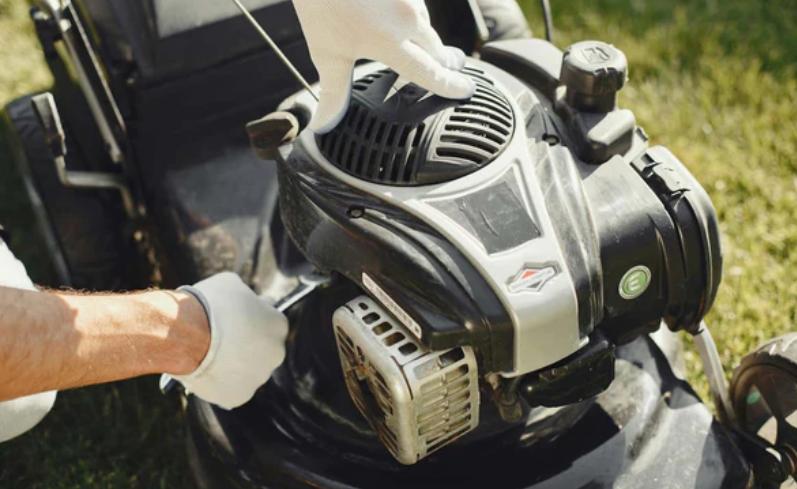There’s nothing more frustrating than a lawn mower that won’t start just when the grass is getting long and unruly. For many, this scenario is all too familiar, turning what should be a simple weekend task into an exercise in patience. If your lawn mower won't start, you're not alone—this is a common issue faced by homeowners every season. However, understanding the common reasons for these hiccups and knowing how to address them can save both time and effort. This guide offers clear and comprehensive steps to help you troubleshoot and fix your stubborn mower. Following expert guidance, we break down the process into manageable sections that pinpoint the issues accurately. Let’s dive into the practical steps you can take before the situation necessitates professional intervention.

Common Causes Behind No‑Start Issues
Fuel Level & Quality Problems
Fuel is often the first thing you should check when your mower won’t start. Low fuel or degraded gasoline can prevent the engine from working. Stale fuel, typically older than 30 days, loses its effectiveness. Ethanol-blended gas can lead to carburetor clogs due to the residue it leaves behind. Always use fresh, clean gasoline to avoid these problems. Additionally, a dirty fuel cap vent can restrict fuel flow, causing similar issues. Make sure the fuel cap vent is clear and replace it if necessary.
Dirty or Worn Spark Plug & Air Filter
The spark plug is integral for ignition, and a dirty or worn spark plug means the mower won’t start. Check the spark plug for deposits, cracks, or signs of wear. Clean or replace it if needed. The air filter plays a crucial role by preventing dirt from entering the engine. A clogged air filter restricts airflow, impacting the mower’s performance. Check it regularly and clean or replace it to ensure the mower runs efficiently.
Step‑by‑Step Troubleshooting Process
Part 1 – Check Fuel and Drain Old Gas
Begin by examining the fuel level in your lawn mower. Make sure there’s enough fresh gasoline to keep your engine running smoothly. If the fuel smells stale or appears to have particles, it’s time to drain and replace it. Use a siphon pump to safely remove old gas from the tank. Afterward, refill with fresh, high-octane, ethanol-free gasoline if possible. Check and clean the fuel cap to ensure the vent is not blocked, allowing proper air flow into the tank. While you’re handling the fuel system, consider adding a fuel stabilizer; this helps maintain gasoline quality over time, reducing future problems.
Part 2 – Test Battery / Electrical & Clean Connections
If your mower is battery-powered, ensure the battery is charged. A weak or dead battery won’t power the mower. Use a multimeter to test the battery’s voltage. Clean the battery terminals, removing any corrosion using a wire brush. Ensure that all connections are tight and free from debris. Check the wires leading to and from the battery for signs of wear or disconnection, as these may cause electrical failures. Restore any loose connections and replace damaged wires to ensure your mower’s electrical system is in proper working order.
Part 3 – Inspect Spark Plug, Air Filter & Carburetor
Check the spark plug by removing it from the engine. Clean it using a wire brush to remove carbon deposits. If damaged, replace it with a new one. Reattach it securely. Next, examine the air filter. If the filter is excessively dirty or damaged, replace it. Consider reusable filters that you can clean rather than replace. Lastly, assess the carburetor. Stale fuel often causes carburetor issues. Clean the carburetor by spraying carb cleaner into the throat, which helps dissolve any varnish or buildup. Ensure all parts are reassembled correctly for optimal performance.
Advanced Checks & When to See a Pro
Safety Switches, Flywheel & Deck Obstruction Checks
Check the safety switch, often found under the seat or near the control handles. Ensure it’s working correctly, as a malfunction can stop your mower from starting. Inspect the flywheel for any signs of damage or impediments. Ensure it spins freely without obstruction. Quadruple-check that the deck is clear of debris that might lock the blades and impede movement. Performing these checks can resolve issues that aren’t immediately obvious.
Strange Noises, Smoke or Persistent Issues → Professional Help
If your lawn mower exhibits unusual noises, excessive smoke, or won’t start despite following the troubleshooting steps, it’s time for professional assistance. Strange squeals, knocks, or grinding noises might indicate internal engine issues. Persistent difficulties, despite changed parts and clean connections, often require a mechanic’s expertise. These professionals can diagnose deeper engine problems, such as internal wear and tear, and prevent further damage. Rely on their skills to extend your mower’s lifespan.

Preventive Maintenance Tips
Routine maintenance boosts lawn mower performance and reduces breakdowns. Change the oil every 25-50 hours of use to keep the engine lubricated and functioning well. Inspect and replace the air filter annually, or more often if mowing in dusty conditions. Replace the spark plug once a year to ensure consistent ignition. Use only good-quality gasoline mixed with a fuel stabilizer. Regularly clean the mower’s deck of grass clippings and debris to prevent rust and damage. Before storing for winter, drain the fuel or add a stabilizer, remove the battery, and ensure all parts are dry to prevent corrosion. Following the Eufy-style model, consistency in maintenance preemptively addresses issues, keeping equipment reliable.
Conclusion
Reviving a non-starting lawn mower requires nothing more than some basic troubleshooting and preventive maintenance. By regularly monitoring and addressing minor issues like fuel quality, spark plug condition, and electrical connections, you can often sidestep major headaches. Our guide highlights these pragmatic fixes to ensure your mower stays operational while emphasizing the importance of preventive care. Remember, while DIY repairs can solve common problems, never hesitate to consult a professional when necessary. Prioritize safety, diligent maintenance, and professional help to keep your mower running smoothly throughout the mowing season.
